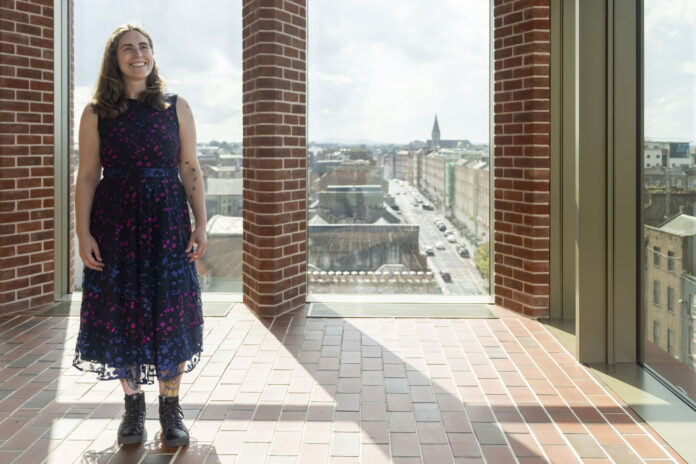
IN 1774, Samuel Dickson became the leaseholder for an area known as Janesboro (also known as Janesborough). He acquired the lease from George Pendon Drew. The area was divided into four fields of approximately eight acres, bounded by a new road constructed by George Pendon Drew, with the land leased to Richard Waller (after whom Waller’s Well was named) and James Treo.
A house was erected on the land situated on what is now O’Donoghue Avenue, across from the entrance to Willmount Estate. The layout of the house was repeatedly described throughout the 19th and early 20th centuries as a two-storey detached gentleman’s residence. It was set back from the road accessed by a gravelled avenue with a charmingly laid out lawn, surrounded on all sides by a high wall.
Inside the house, a porched entrance led to a spacious hall, which opened into a drawing room, a dining room, a breakfast room and kitchen. Through the kitchen was access to a pantry, a scullery, and a room for the maid. Upstairs contained five large bedrooms.
By 1938, indoor plumbing and electricity was added to the house with the upstairs bathroom boasting both hot and cold running water and a separate WC.
The Dickson family often used the house as their permanent residence.
The year 1803 saw the death of Patrick Dickson at the house. Three years later, the house and lands were advertised for lease in the Limerick Gazette.
By 1813, Janesboro House became available for rent once more following the death of its occupant, John Dickson, a barrister at law. His father, Bassett Dickson, died only a few weeks earlier.
Around 1806, Thomas Brazill of Dublin married Mary Dickson. Their eldest son, Stephen Dickson Brazill, used both his parents’ names as would his descendants. Soon the ownership of the house and land would fall to the Dickson Brazill line. Stephen offered the house and lands for let in April 1834, stating that it was within half a mile of Pery Square and located near Mr Wilson’s Nursery.
Taking up the lease were William and Thomas English. The English family ran extensive businesses in Limerick, including as ship chandlers, paint merchants, window glass suppliers, and garden suppliers. Within a year, the English family has established a rope walk in Janesboro where they would create rope from hemp and flax.
It was noted in the 1850s Griffith’s Valuation that William Carroll English Esquire leased the house from Thomas Dickson Brazill. He in turn leased a house in Janesboro to Michael Donoghue, possibly one of the two small slate cottages with gardens offered for lease in April 1834.
William Carroll English lived in Janesboro House with his wife Anne English (nee Rossigton). When they married in 1851, it was noted that William grew flax that reached nearly two feet high next to his house.
Following William Carroll English’s death in 1854, his father-in-law, Robert Rossington, moved into Janesboro. He lived there with his daughter until his own death in 1872.
In 1873, after almost a hundred years, Janesboro left the Dickson family, after Stephen Dickson Brazill put it up for sale and bought by the occupant William English, who lived there with his mother.
Throughout this time the English family continued producing rope in Janesboro, which only stopped in 1885 after 50 years. In 1894, following the death of William English, the house and land was put up for sale.
It was once again bought by the occupants, this time the Barry family. The patriarch of the family, Edmond Barry, worked as a victualler in William Street. He was not a native of the city but made it his home. So much so that he was an elected member of the City Council.
Barry was married twice, with his second wife, Catherine Ryan, being 28 years his junior. Catherine was only one year older than Edmond’s son James Francis. Edmond Barry died in 1924, outliving both his son James Francis and daughter-in-law Margaret.
James Francis Barry was born in 1872. He did not follow in his father’s footsteps as a victualler, instead he became a horse dealer. In 1913, he was involved in a partnership that sold 248 horses to the Greek Government.
He did, however, follow his father into the City Council. James was only 26 years old when he was elected as a member of the Labour Party. Three years later, he became Mayor of Limerick, making him one of the youngest people to serve in that position.
Even though he resigned from the City Council in 1906, he continued in public life as justice of the peace and city coroner. His personal life was filled with tragedy, his wife Margaret Barry (nee Treacy) died in Janesboro House in 1915, leaving him with a young family. James Francis Barry died at the young age of 49 years in 1921.
Planning the years ahead
Planning for the Janesboro housing estate began in 1938 after the corporation purchased fields surrounding Janesboro House. In the original scheme, the house, which was still occupied by the Barry family, was not part of the development. As works began, and building began encroaching on the peaceful serenity that once surrounded the house and Mrs Marie Barry decided to sell up.
It would take until 1944 for the corporation to buy and demolish Janesboro House and incorporate it into the housing scheme. Four 19th century cottages next door to the former Janesboro House were not bought for the scheme and remain in situ on O’Donoghue Avenue.
Unlike many housing projects of the time, the Janesboro scheme was not part of slum clearance. It welcomed people from various parts of the city, creating a vibrant new community.
The rents were set on an economic basis, starting at 12 shillings a week. In June 1939, the first 150 tenants attended the Council Chambers, in Rutland Street, where in front of Mayor D Bourke they pulled a number from a drum which indicated their new home in Janesboro.
The first names suggested in 1939 for the nine avenues in Janesboro were Irish revolutionaries O’Dwyer, Naughton, Meaney, Hartney, Blake, Moynihan, Danford, McInerney, and McSweeney. A year later, the names were settled. Streets named after those who took part and were executed in the 1916 Easter Rising – Roger Casement, Thomas Clarke, Con Colbert, Edward Daly, Sean McDermott, Thomas McDonagh, Patrick Pearse, and James Connolly.
The final avenue was named after Joseph O’Donoghue. O’Donoghue was murdered outside his lodging at ‘Tigh na Fáinne’ on the avenue that now bears his name on the night of March 6, 1921. The same night Mayor George Clancy and former Mayor Michael O’Callaghan were both murdered, leading it to be referred to as the ‘Night of the Murdered Mayors’, or the ‘Curfew Murders’.
In 1954, Marian Avenue, Place, and Drive received their names after the Marian year. That year also saw the erection of the Marian Shrine at one entrance to the estate.
A bustling modern neighbourhood
The Janesboro Housing Scheme was officially opened by P J Ruttledge, Minister Local Government on July 17, 1940. The timber and cement for the scheme was supplied locally by James McMahon Ltd, Dock Road. Scheme contractors P Molloy and Sons, and Messrs Murphy and Black, Limerick, P Fahy, glazed 120 houses. All the houses fitted with gas cookers were supplied by Limerick Corporation.
The estate’s growth continued, and by 1943 the area had its own football club, Janesboro FC, with its clubhouse at Pearse Stadium.
By 1966, Matthew Connery operated a grocery at the side of his house on 32 Pearse Avenue. As of 2024, the ghostly remnants of the name in the front of the building can still be seen.
Religious and educational developments followed as well. In 1942, Our Lady Queen of Peace Church held its inaugural mass, officiated by the Bishop of Limerick, Rev Dr Keane. In 1950, Canon Rice, parish priest of Donoughmore, invited the Presentation Sisters to open a Junior School in Janesboro, which was at that time a very rural area.
The Sisters purchased two fields from Mr Joe Barry of Southill House and the foundation stone for Our Lady Queen of Peace School was laid early in 1951. The seven roomed school, the lower corridor of the present school, was opened on July 2, 1951.
The Tenant Purchase Scheme was extended to urban areas with the 1966 Housing Act. The scheme was very attractive and affordable for the residents of Janesboro and by 1981, 262 of the 272 houses in Janesboro had been bought by their tenants.
The latest edition to the community is Boro Park, planted with native trees bearing plaques that commemorate former community members. This community resource was spearheaded by local councillor and Janesboro resident Sarah Kiely.
Over the centuries, Janesboro has transformed from farmland and an exclusive gentleman’s residence to a bustling and dynamic neighbourhood with deep-rooted community ties.
What began as a few leased fields and a stately home, Janesboro has evolved into a model housing scheme that welcomed diverse residents from all over Limerick. As new generations move into Janesboro, they inherit not only the houses, but also a rich legacy.

